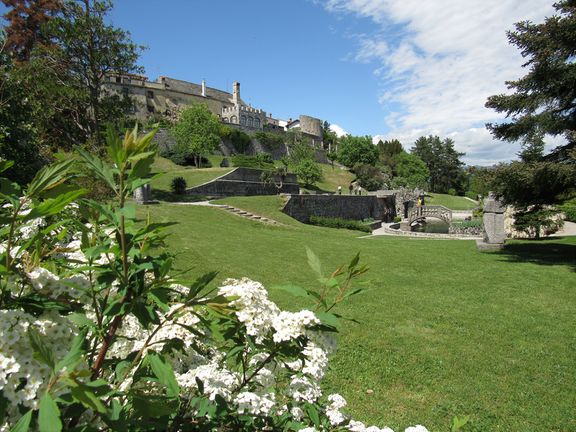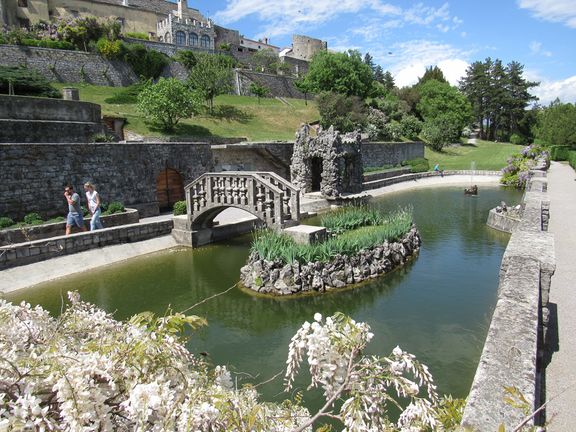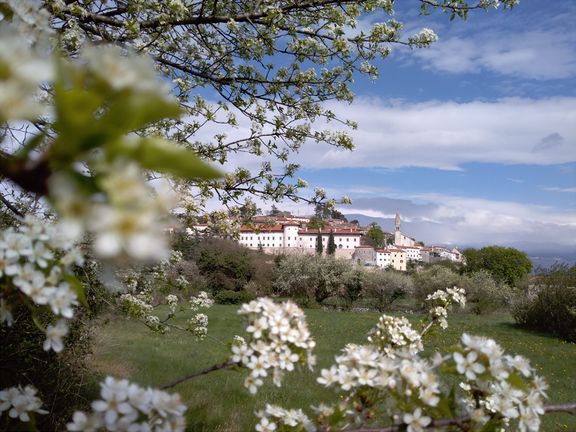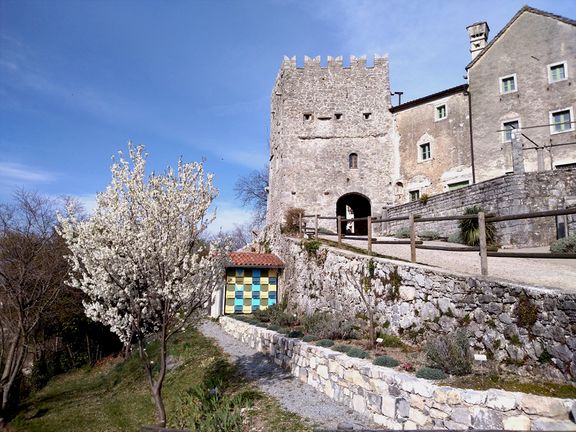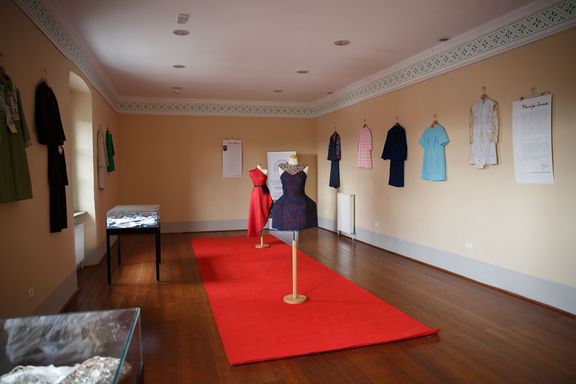Difference between revisions of "Štanjel Castle"
(added a few see also links) |
|||
| (One intermediate revision by the same user not shown) | |||
| Line 1: | Line 1: | ||
{{Article | {{Article | ||
| − | | status = | + | | status = NIFERTIK! |
| maintainer = Editor | | maintainer = Editor | ||
}} | }} | ||
| Line 20: | Line 20: | ||
{{Teaser| | {{Teaser| | ||
| − | [[Štanjel Castle]] was built during the 16th century by the Counts of Coblenz on the foundations of an earlier, medieval fortification | + | Located on the Karst Plateau overlooking the Vipava Valley, [[Štanjel Castle]] was built during the 16th century by the Counts of Coblenz on the foundations of an earlier, medieval fortification. The castle church and central village square are part of the settlement core of Štanjel, a medieval settlement of major heritage significance. |
The [[Lojze Spacal Gallery and the Karst House, Štanjel|Lojze Spacal Gallery]] was opened here in [[established::1988]]. | The [[Lojze Spacal Gallery and the Karst House, Štanjel|Lojze Spacal Gallery]] was opened here in [[established::1988]]. | ||
}} | }} | ||
| Line 27: | Line 27: | ||
== History == | == History == | ||
| − | In the 17th century the town of Štanjel was fortified to defend it against Ottoman raids. In 1810 the castle passed to Count Coronini and was later owned successively by Christoph de Zahony, Count Ritter, the knight Joseph Fabiani, Count Melzi, Baron Sessel, a society from Trieste headed by Captain Parisi and eventually by Camillo von Marzetini. | + | In the 17th century, the town of Štanjel was fortified to defend it against Ottoman raids. In 1810, the castle passed to Count Coronini and was later owned successively by Christoph de Zahony, Count Ritter, the knight Joseph Fabiani, Count Melzi, Baron Sessel, a society from Trieste headed by Captain Parisi and eventually by Camillo von Marzetini. |
| − | Between 1920 and 1935 the castle was renovated by the architect [[Maks Fabiani]], who turned it into a multipurpose building in order to house the municipal offices of Štanjel and other public services. | + | Between 1920 and 1935, the castle was renovated by the architect [[Maks Fabiani]], who turned it into a multipurpose building in order to house the municipal offices of Štanjel and other public services. |
| − | + | Unfortunately in 1944, the castle burnt down and was heavily damaged. It has been slowly rebuilt since. | |
== See also == | == See also == | ||
* [[Lojze Spacal Gallery and the Karst House, Štanjel]] | * [[Lojze Spacal Gallery and the Karst House, Štanjel]] | ||
| + | * [[Goriška Museum]] | ||
*[[:Category:Fabiani heritage]] | *[[:Category:Fabiani heritage]] | ||
| + | *[[Centre for Karst Architecture]] | ||
== External links == | == External links == | ||
| Line 46: | Line 48: | ||
[[Category:Castles]] | [[Category:Castles]] | ||
[[Category:Fabiani heritage]] | [[Category:Fabiani heritage]] | ||
| + | [[Category:Updated 2020]] | ||
Latest revision as of 09:02, 1 June 2020
History
In the 17th century, the town of Štanjel was fortified to defend it against Ottoman raids. In 1810, the castle passed to Count Coronini and was later owned successively by Christoph de Zahony, Count Ritter, the knight Joseph Fabiani, Count Melzi, Baron Sessel, a society from Trieste headed by Captain Parisi and eventually by Camillo von Marzetini.
Between 1920 and 1935, the castle was renovated by the architect Maks Fabiani, who turned it into a multipurpose building in order to house the municipal offices of Štanjel and other public services.
Unfortunately in 1944, the castle burnt down and was heavily damaged. It has been slowly rebuilt since.
See also
- Lojze Spacal Gallery and the Karst House, Štanjel
- Goriška Museum
- Fabiani heritage
- Centre for Karst Architecture



